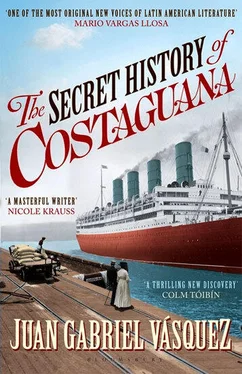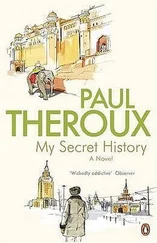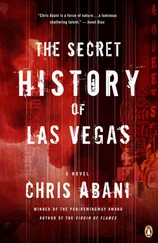All this passed me by, almost without touching me. It’s a flimsy consolation to think that, even though I wasn’t present, I could have been (as if that would authenticate me). If a few hours later, instead of sleeping the sleep of the dead in the uncomfortable folding bed in my room, I had looked out from the hotel balcony, I would have seen Korzeniowski and Cervoni, the Ulysses of Corsica and the Telemachus of Berdichev, climb aboard the last carriage of the train with the tickets purchased the evening before from the poor little mouse in the saloon. If I had stood on the balcony until eight that morning, I would have seen the ticket collectors lean out between the carriages — their hats pulled down firmly on their heads — to announce the departure punctually, and I would have smelled the smoke of the locomotive and heard the screech from its smokestack. The train would have pulled out right under my nose, taking Cervoni and Korzeniowski, among other passengers, and, in the freight cars, the one thousand two hundred and ninety-three breech-loading, bolt-action Chassepot rifles, which had crossed the Atlantic Ocean aboard the Saint-Antoine and which had, themselves, a good story to tell.
Yes, Readers of the Jury, in my democratic tale things also have a voice, and will also be allowed to take the floor. (Oh, the tricks a poor narrator must resort to in order to tell what he doesn’t know, to fill his uncertainties with something interesting. . ) Well, I wonder: if, instead of snoring in my room, ad portas of a terrible headache, I had gone down to the station and mixed with the travelers, and I had meddled in the freight car and interrogated one of the Chassepots, any one of them, one chosen at random for the objectives of my limitless curiosity, what story would it have told me? In a certain Conradian novel whose name I do not care to remember, a certain rather affected character, a certain Frenchified Creole, asks: “What do I know of military rifles?” And I, now, put myself on the other side with a much more interesting (forgive my modesty) question: What do rifles know of us?
The Chassepot brought by Korzeniowski to Colombian lands was manufactured in the Toulon armories in 1866. In 1870 it was taken as army-issue weapon to the Battle of Wissembourg and used, under the orders of General Douay, by soldier Pierre-Henri Desfourgues, who dexterously aimed it at Boris Seeler (1849) and Karl Heinz Waldraff (1851). Pierre-Henri Desfourgues was wounded by a Dreyse and removed from the front; in the hospital, he received the news that Mademoiselle Henriette Arnaud (1850), his fiancée, was breaking their engagement to marry Monsieur Jacques-Philippe Lambert (1821), presumably for financial reasons. Pierre-Henri Desfourgues cried for twenty-seven consecutive nights, at the end of which he introduced the barrel of the Chassepot (11 millimeters) into his own mouth, till it touched his uvula (7 millimeters) with the sight (4 millimeters), and squeezed the trigger (10 millimeters).
The Chassepot was inherited by Alphonse Desfourgues, Pierre-Henri’s first cousin, who turned up armed with it for the defense of Mars-la-Tour. Alphonse shot it sixteen times during the course of the battle; not once did he hit a target. The Chassepot was then taken from him (in a rude way, apparently) by Captain Julien Roba (1839), who from the Metz Fortress successfully shot cavalrymen Friedrich Strecket, Ivo Schmitt, and Dieter Dorrestein (all 1848). Emboldened, Captain Roba joined the vanguard and withstood five hours of the attack of two Prussian regiments. He died after taking a bullet from a Snider-Enfield. No one has been able to explain what a Snider-Enfield was doing in the hands of a Prussian of the 7th Armored Division (Georg Schlink, 1844).
During the Battle of Gravelotte, the Chassepot changed hands one hundred and forty-five times and fired five hundred and ninety-nine bullets, of which two hundred and thirty-one missed, one hundred and ninety-seven killed, and one hundred and seventy-one caused injuries. Between the hours of 2:10 and 7:30 p.m. it lay abandoned in a trench in Saint-Privat. Jean-Marie Ray (1847), under the orders of General Canrobert, had replaced a dead gunner on a mitrailleuse and died in his turn. Recovered after the battle, the Chassepot had the luck to fight in Sedan, under Napoleon III; like Napoleon III it was defeated and taken prisoner. Difference: while Napoleon went into exile in England, the Chassepot served Konrad Deresser (1829), artillery captain of the Prussian 11th Regiment, during the siege of Paris. In Deresser’s hands, it was present in the Hall of Mirrors of the Palace of Versailles and witnessed the proclamation of the German Empire; hanging over Deresser’s back, it was present in the Louis XIV Salon and witnessed the suggestive glances of Madame Isabelle Lafourie; at Deresser’s feet, it was present in the woods behind the Palace, and witnessed the way the Captain’s pelvis responded to those glances. Days later, Deresser moved to Paris as part of the German occupation; Madame Lafourie, in her capacity as occupied territory, became a regular creditor of his favors (January 29, February 12, February 13, March 2, March 15 at 6:30 and at 6:55 p.m., April 1). April 2: Monsieur Lafourie enters a room on rue de l’Arcade by surprise and by force. April 3: Konrad Deresser receives Monsieur Lafourie’s seconds. April 4: The Chassepot waits on the side, while Monsieur Lafourie and Captain Deresser each take a Galand revolver (1868, made in Belgium). Both Galands fire, but only Deresser is hit by a bullet (10.4 millimeters) and falls the full span of his height (1,750 millimeters). On April 5, 1871, Monsieur Lafourie sells the defeated man’s Chassepot on the black market. Which is far from an honorable way to behave.
For five years, two months, and twenty-one days, the Chassepot disappears. But at the end of June 1876 it is acquired, along with another one thousand two hundred and ninety-two rifles, veterans like itself of the Franco-Prussian War, by Frédéric Fontaigne. Fontaigne — it is a secret to no one — works as member of staff in charge of various matters for a firm called Déléstang & Fils, owner of a fleet of sailing ships based in Marseille, as well as playing the straw man for Monsieur Déléstang, aristocrat and amateur banker, fanatic conservative, nostalgic realist, and ardent ultra-Catholic. Monsieur Déléstang has decided to give the Chassepot a particular destiny. After spending fourteen days and nights in a deposit in the vieux port of Marseille, the rifle embarked in one of the company’s ships: the Saint-Antoine .
The Atlantic crossing follows, without incident. The ship anchors in Limón Bay, Panama, United States of Colombia. The Chassepot is taken by boat to the railway depot (this has already been mentioned). On board freight car number 3 (this, on the other hand, has not), it covers the fifteen leagues between Colón and Panama City, where it is the object of a clandestine transaction. Night has just fallen. At the Waterfront Market, under an awning among bunches of Urubá bananas, a meeting is held between the Polish steward Józef Korzeniowski, the Corsican adventurer Dominic Cervoni, the Conservative General Juan Luis De la Pava, and the interpreter Leovigildo Toro. While General De la Pava hands over the sum agreed, through multiple intermediaries, with Déléstang & Fils, the Chassepot and the one thousand two hundred and ninety-two like it are taken to the port in mule-drawn carts and loaded onto the Helena steamship, whose Pacific route comes from California, via Nicaragua, and has as its final destination the port of Lima, Peru. Hours later, on board the Helena , General De la Pava gets repeatedly drunk and, to shouts of “Death to the Government! Death to President Aquileo Parra! Death to the damned Liberal Party!” shoots six shots into the air with the Smith & Wesson model 3 revolver he bought in Panama from a California miner (Bartholomew J. Jackson, 1834). On August 24, the steamer reaches port in the city of Buenaventura, on the Pacific coast of Colombia.
Читать дальше












